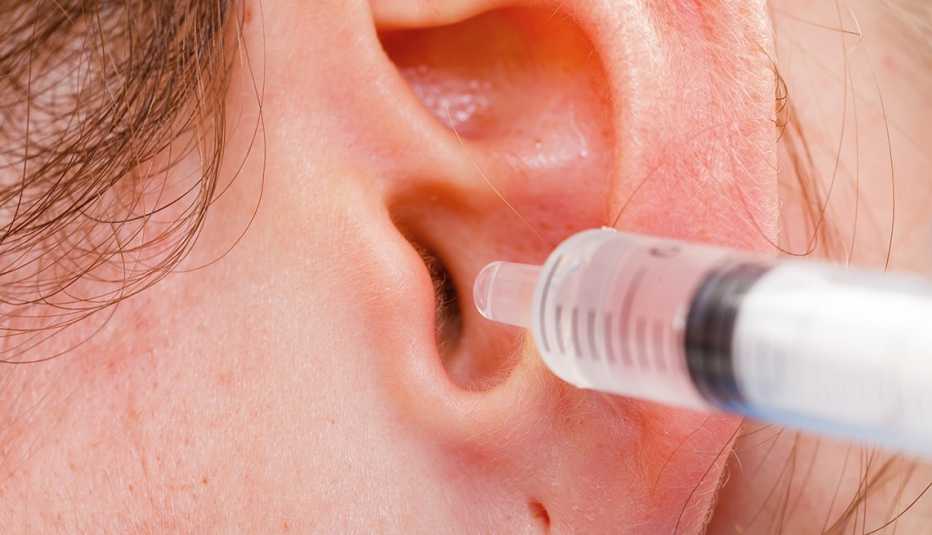AARP Hearing Center


Key takeaways:
- Earwax protects your ears from dirt, debris, germs and infections.
- Too much earwax buildup can harden and block your ear canal.
- There are a few ways to safely remove earwax buildup at home.
- But there are times you need to see your doctor instead.
Earwax might not be something you want to think about, but it’s totally normal. Knowing how to unclog your ears and get rid of earwax when you have a blockage may help you hear better and prevent ear infections, pain and more.
What is earwax, and why do we have it?
Earwax — the medical term is cerumen — is a waxy substance secreted by the tiny sebaceous and sweat glands that line the walls of your outer ear canal. It protects your eardrum from things like dirt and germs because it continuously regenerates.
“These secretions keep a flow going away from the eardrum toward the opening of the ear, catching dead skin cells, tiny hairs that line the ear canal and other types of microscopic debris along the way,” explains Mark Vaughan, M.D., a family physician and medical director at Auburn Medical Group in Auburn, California. When the earwax reaches the outside of your ear, it typically flakes off. Jaw movements, such as talking and chewing, help move things along.
Free Hearing Test
AARP members can take the National Hearing Test online or on their phones — for free. This 10-minute test can help you decide whether you need a more comprehensive hearing exam.
Earwax also coats your ear canal, repelling water and preventing your skin from drying out. The wax is slightly acidic, so it “creates an unfriendly environment” for bacteria and fungus that tend to develop in the moist, dark environment of the inner ear, says Yu-Lan Mary Ying, M.D., an otolaryngologist and head and neck surgeon affiliated with Rutgers New Jersey Medical School in Newark. In fact, the earwax of people with diabetes is less acidic, making them more vulnerable to ear infections.
Why too much earwax can be a problem
“When ears are making the right amount of wax, it’s actually the sign of a healthy ear,” says Anh Nguyen-Huynh, M.D., an otolaryngologist and head and neck surgeon affiliated with the Cleveland Clinic. But some people make too much.
The American Academy of Otolaryngology says about 1 in 20 adults and more than one-third of seniors experience a buildup of earwax, leading to about 8 million earwax removal procedures each year.




































































Next in series
New Treatment for Tinnitus Can Help Bring Relief
A recently approved method using mild electrical pulses helps retrain the brain to ignore the phantom noise